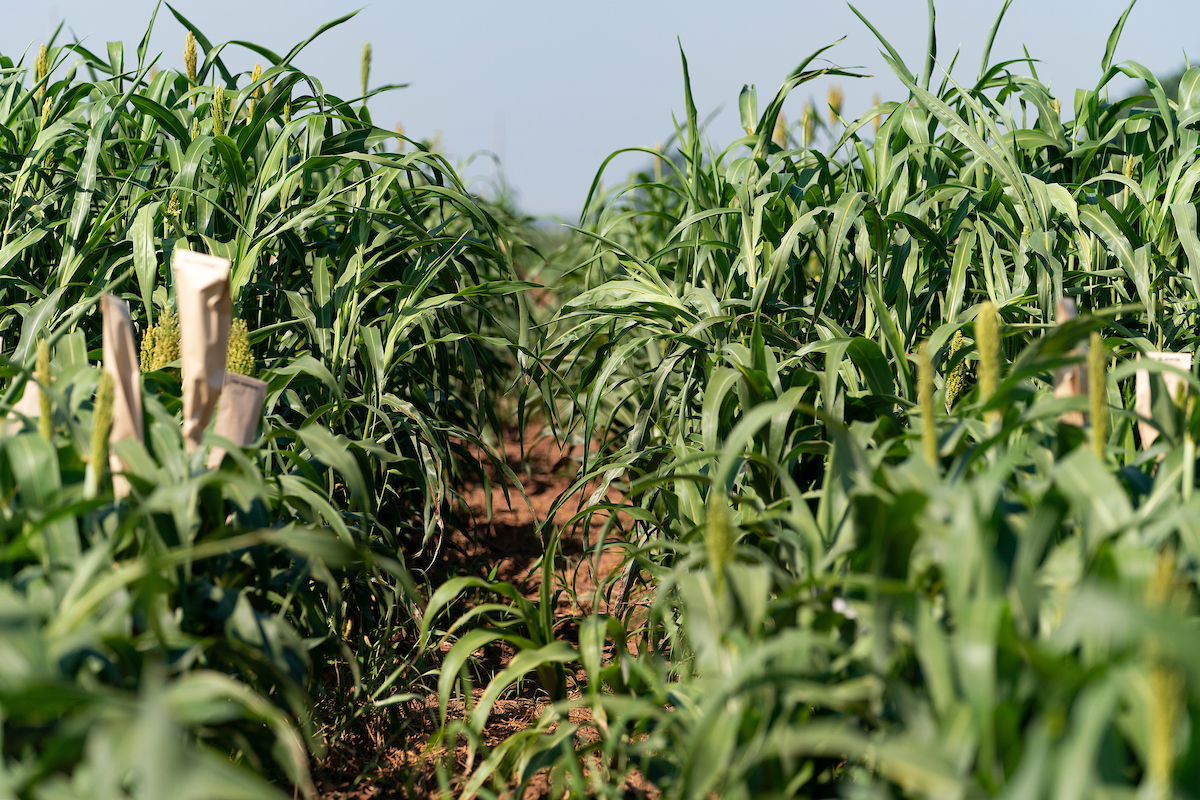AgriLife Extension experts say sorghum producers can now use Transform
WESLACO — Texas forage and grain sorghum growers now have state and federal permission to use a pesticide this year that has been highly effective against their most troublesome pest, the sugarcane aphid, experts say.

The Environmental Protection Agency and the Texas Department of Agriculture announced April 11 that Transform has been granted a Section 18, according to Danielle Sekula-Ortiz, a Texas A&M AgriLife Extension Service integrated pest management agent in Weslaco.
A Section 18 is an emergency exemption allowing use of a pesticide on a specific crop for the management of a specific insect pest for a given time period.
The EPA’s label, or permission, to use Transform was issued in 2014 and 2015 for use on grain and forage sorghum, but was cancelled prior to the 2016 growing season pending further studies, Sekula-Ortiz said.
That left growers with only one other available and effective insecticide, Sivanto, until recently when the EPA reviewed data from AgriLife Extension and other university pest management trials and other data, and granted the Section 18 for Transform.
“This action is a very good thing for grain sorghum producers in Texas because it’s a very effective tool in the fight against sugarcane aphids, and like Sivanto, Transform is not harmful to beneficial insects,” said Brad Cowan, the AgriLife Extension agent for Hidalgo County.
“During 2014, an especially bad year for explosive populations of sugarcane aphids, Transform developed a proven track record in its effectiveness against the pest,” Cowan said. “Transform saved growers and the state economy millions of dollars in 2014 and 2015 so we’re glad to have it back in use.”
Left unchecked, sugarcane aphids suck sap from sorghum plant leaves and deposit “honeydew,” a sticky waste that clogs harvesting equipment, Cowan said. They can also move into the grain head, slowing the ripening process and thus reducing both quality and yield.
Because of cool, rainy conditions in 2015, sugarcane aphids were not a major problem in the three counties of the Lower Rio Grande Valley where grain sorghum is produced, but they were problematic in other parts of the state that also relied on Transform for control.
“Sivanto has been available for use against the sugarcane aphids in sorghum since 2015,” Cowan said. “It is also effective in controlling sugarcane aphids. But since sugarcane aphid populations were not high in South Texas in 2015, growers don’t have a proven track record with Sivanto and they are sometimes hesitant to use a new product. Sivanto may cost a little more than Transform, but there is data indicating it may last a little longer.”
Nonetheless, it’s always better to have two effective insecticides available in order to reduce the chances of the sugarcane aphid developing a resistance to either or both products, he said.
“The availability of Transform gives growers a second tool in their arsenal against the sugarcane aphid,” Cowan said. “With two products at their disposal, growers can alternate products to reduce the chance of resistance.”
AgriLife Extension experts say it’s too early in the season to tell exactly how damaging the sugarcane aphid will be across the state this year.
Dr. Charles Allen, an AgriLife Extension entomologist and state integrated pest management coordinator in San Angelo, said populations of the insect, which can rapidly reproduce to explosive populations, have already been reported this year.
“High populations are being seen on johnsongrass and surviving grain sorghum volunteer and stubble in South Texas,” he said. “Overwintering populations have been spotted by entomologists along the Gulf Coast, well into the Texas Blacklands, in the Rolling Plains and even in southern areas of the Texas High Plains. All this could spell earlier problems with sugarcane aphids across the state this year.”
The sugarcane aphid was first spotted in Texas grain sorghum late in the 2013 growing season when most sorghum had been harvested, Allen said. But in 2014 aphid populations reached high levels in both grain sorghum and forage sorghums in South and East Texas. They were lower in those areas in 2015 due to weather, but populations reached high levels in West Texas.
“Without effective insecticides and strategies to use them, grain sorghum losses would have been high,” he said. “Late season hay and forage losses were significant west of I-35 in 2015.”
The sugarcane aphid has also caused considerable damage in other Southern states and moved as far north as Kansas, Missouri, southern Illinois, Kentucky and Virginia, Allen said.
“Texas is the most southern of states affected with large plantings of grain sorghum, and Texas producers have had the longest and toughest battles.”
Dr. Robert Bowling, an AgriLife Extension entomologist in Corpus Christi, said there are restrictions on when growers can apply Transform.
“The Section 18 label states that Transform cannot be applied three days prior to bloom until seed set,” he said. “They may be some differences from field to field, but that time frame is generally two weeks. Remember that flowering does not start until five to seven days after panicle emergence, so there is a little time to apply Transform after panicle emergence and three days prior to flowering.”
Sekula-Ortiz said the EPA considered many comments from growers in making their decision to allow the use of Transform this year, and the time restriction on its application was one of the main differences between this and previous years’ exemptions.
“Restricting the use of Transform during this time of the plant’s life cycle was imposed to prevent the product from coming into contact with bees that may in the field collecting pollen when grain sorghum is blooming,” she said.
The current Section 18 exemption became effective April 8 and will expire April 8, 2017.





